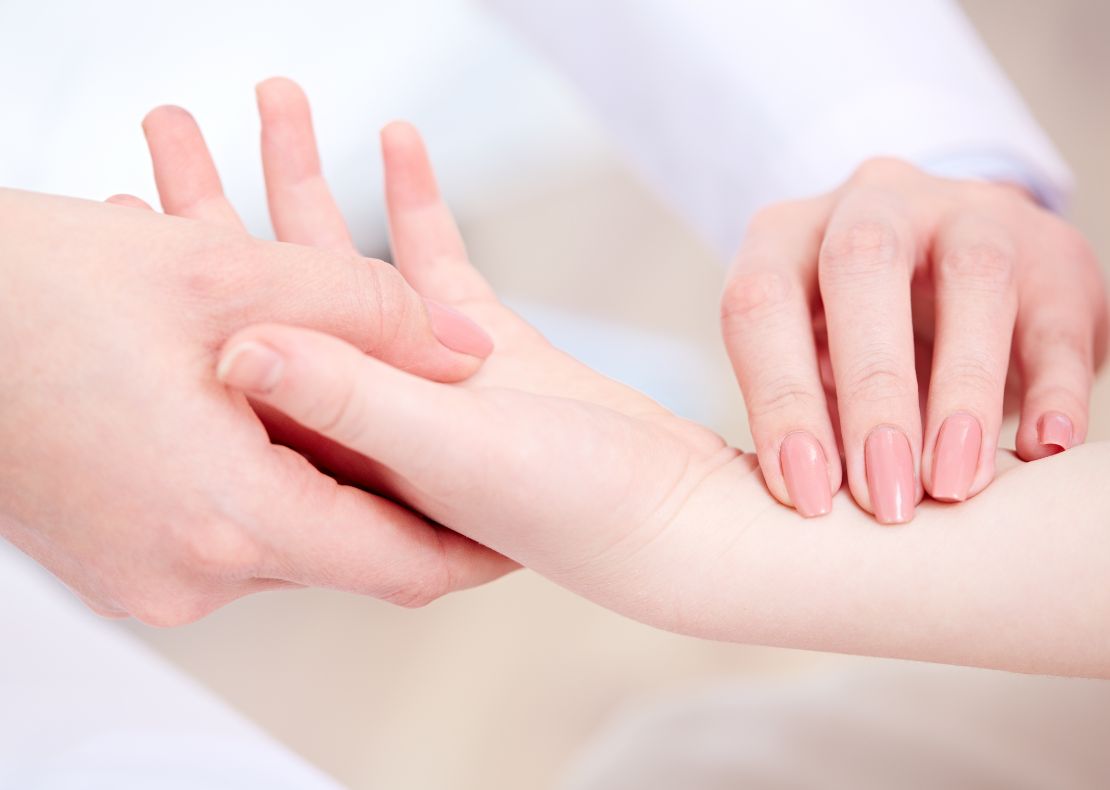
Hypermobility. If you live with it, you know the unique challenges it brings: joint pain, fatigue, and difficulties in performing day-to-day tasks that many take for granted. This blog post aims to guide you through the world of hypermobility and highlight some of our products that can make life a little easier. Whether you're younger or older, suffering from hypermobility or arthritis, or caring for someone who does, there are tools and gadgets designed to help you navigate life with more comfort and control.
What is hypermobility?
Let's start with a brief overview of hypermobility. In the simplest terms, hypermobility refers to the ability of certain joints to move beyond the typical range of motion. This condition affects many people across all ages and can bring about both physical and emotional challenges. Pain and fatigue are common symptoms, and they can significantly affect quality of life. Tasks requiring fine motor skills, like writing or cutting, can become a source of frustration or even pain.
We stock an array of products designed to make these tasks less daunting for those living with hypermobility or arthritis. Let's explore some of these invaluable tools.
Pencil and pen grips
Writing can be an uphill battle when living with hypermobility or arthritis. The joint instability and pain associated with these conditions often make holding and controlling a pen or pencil difficult. This is where our pencil and pen grips can be a real game-changer.
These cleverly designed grips provide increased control over writing instruments, leading to a smoother and more comfortable writing experience. They are particularly beneficial for children who are still developing their motor skills. However, they're not exclusive to the young. For adults, especially those struggling with arthritis, these grips can alleviate the discomfort of prolonged writing. The grips are made from soft, durable materials that conform to your fingers, providing superior comfort and ease of use.
Dual control scissors
Next on our list are dual control scissors. The concept is simple yet effective: these scissors feature two sets of loops, one for the child and one for the adult, facilitating a shared cutting experience. This design makes learning to cut much safer and more controlled, as it allows the adult to guide the cutting motion until the child is comfortable doing it alone.
For people with hypermobility, these scissors offer the added advantage of sharing the physical load of cutting, reducing strain on the joints. They're a perfect tool for teaching, learning, and maintaining control over cutting tasks, all while keeping pain and fatigue at bay.
Left-handed scissors
Left-handed individuals with hypermobility or arthritis often face a unique set of challenges. Many tools and devices, including scissors, are typically designed for right-handed use, making them awkward and uncomfortable for left-handed users. Recognising this need, we offer left-handed scissors, specifically designed to fit the natural hand position and movement of left-handed people.
These scissors provide enhanced comfort and control, reducing the strain and discomfort often experienced when using non-left-handed tools. They're crafted with high-quality materials, ensuring durability and longevity, and are available in various sizes to cater to all ages.
Aiding arthritis
As we've noted, all these products are not just for individuals with hypermobility; they're equally beneficial for people with arthritis or anyone dealing with hand weakness. Elderly people, in particular, can find these tools helpful in maintaining independence and control over daily tasks. Using these tools can mitigate joint pain, reduce strain, and offer a more comfortable, pain-free experience.
What else can be done?
There are various other strategies people can use to make life easier:
1. Lifestyle modifications:
Stay active:
Regular low-impact exercises such as swimming, walking, and pilates can help strengthen muscles and joints, improve stability, and manage weight, which can alleviate symptoms. However, it's important to avoid high-impact activities that can strain the joints.
Healthy diet:
A balanced diet rich in anti-inflammatory foods like fruits, vegetables, whole grains, and omega-3 fatty acids can help manage arthritis symptoms.
Maintain a healthy weight:
Extra weight puts additional stress on weight-bearing joints, worsening arthritis symptoms.
Sleep well:
A good night's sleep can help manage pain and fatigue.
2. Medications and supplements:
Pain relievers and anti-inflammatories:
Over-the-counter pain relievers and anti-inflammatory drugs can help manage pain and swelling. Always consult with a doctor before starting any new medication.
Supplements:
Some supplements such as glucosamine, chondroitin, and omega-3 can help manage arthritis symptoms. However, always consult with a healthcare provider before starting any new supplement.
3. Physical and occupational therapy:
Physiotherapy:
A physiotherapist can design a personalised exercise program to strengthen muscles and improve joint mobility.
Occupational therapy:
An occupational therapist can suggest changes in your daily activities to protect your joints.
4. Assistive devices and adaptive tools:
Mobility aids:
Canes, walkers, and wheelchairs can help you get around.
Adaptive tools:
Jar openers, buttonhook tools, and long-handled shoehorns can make everyday tasks easier.
Orthotic devices:
Wrist supports, knee braces, and shoe inserts can support and protect joints.
5. Stress management and mental health:
Relaxation techniques:
Mindfulness, meditation, and yoga can help manage stress, which can worsen symptoms.
Support groups:
Connecting with others who have similar experiences can provide emotional support and practical advice.
6. Regular check-ups:
Regular visits to your doctor or healthcare provider are crucial for monitoring your condition and adjusting treatments as necessary.
Lastly, remember that every person is unique. What works for one person might not work for another. Always consult with your healthcare providers to develop a personalised plan that suits your individual needs and lifestyle.
In conclusion, living with hypermobility or arthritis doesn't mean you have to endure discomfort or forfeit your independence. It's all about finding the right options to help you do what you love and live your life to the fullest, pain-free and empowered.
If you need more advice or want to learn more about our products, get in touch today.




